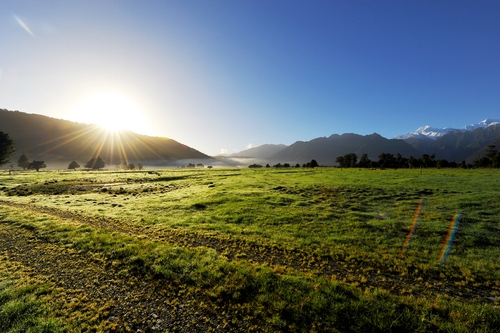
Sales of lifestyle blocks are continuing to rise in number, though the median price has eased a little in the past month.
According to Real Estate Institute figures there were 1844 blocks sold in the three months to May, a rise of 260 sales, or 16.4% compared with the same period in 2012. Sales volumes in the latest period were up by 148, or 8.7% compared with the three months to April 2013.
The May median price eased a little bit compared with the record NZ$518,000 achieved in the three months to April. For the three months to May it dipped to NZ$509,000, although this is some NZ$34,500, or 7.3% ahead of the figure for the same time a year ago.
Auckland continues to see the most sales activity, with its sales for the three months to May totaling 448, up some 51.4% on the same period a year earlier and 8.7% on the 412 sales reported in the three months to April 2013.
The Auckland median sales price of NZ$802,500 was up 12.6% on the same period a year ago, though down slightly on the NZ$805,000 recorded in the three months to April. The record for Auckland remains NZ$842,500, established in June 2007.
In the three months to May the median price compared with the same period a year ago rose by 9.7% in Waikato, however, the median price only rose by 1.2% in Canterbury.
REINZ said earlier in the year that so-called land-banking could be behind some of the sales activity in Auckland and Waikato.
REINZ rural market spokesman Brian Peacocke said increasing confidence in the lifestyle sector was seeing increasing sales volumes around Auckland and Christchurch, as well as in the Waikato, although smaller provincial centres reported a tightening of the market with reasonable activity up to NZ$600,000 but reduced activity above that.
"Across the country cautious optimism is being expressed that buoyancy in the rural sector will push positive cash flows into the wider economy," he said.
For the 12 months to May 2013 there were 6150 unconditional sales of lifestyle properties, an increase of 15% over the 12 months to May 2012.
A total of 10 regions recorded increases in sales compared with May 2012 while four recorded decreases in sales.
Auckland recorded the largest increase (+152 sales), followed by Waikato (+58 sales) and Canterbury (+36 sales).
Compared with April 2013, 13 regions recorded increases in sales with one region recording a decrease. Auckland recorded the largest increase in sales (+36 sales), followed by Waikato (+25 sales) and Hawkes Bay (+19 sales).
The number of days to sell for lifestyle properties improved by five days, from 72 days for the three months to the end of April to 67 days for the three months to the end of May.
Compared with the three months ended May 2012 the number of days to sell improved by 16 days from 83 days to 67 days.
Canterbury and Gisborne recorded the shortest number of days to sell in May at 45 days, followed by Southland at 46 days and Auckland at 59 days. Bay of Plenty recorded the longest number of days to sell at 102 days, followed by Northland at 95 days and Hawkes Bay at 86 days.
2 Comments
Sales within the existing pool represent the disillusioned urban dreamers, yet to be disillusioned urban dreamers, folk getting too old to cope, folk realising where thing are going and heading for self-sufficiency as a personal strategy, and speculators both in and out.
The real question is: how many more are being created, and - given that peripheral farm-land is the only available space - how much area is being converted?
Supplementary question is long-term viability - everything from the ability to pay off the mortgage in the time remaining, growing/tending area per dwelling, community/support proximity etc.
The MUL Overflow Patch lives on. 175,000 of these unproductive blocks, all surropunding major cities.
Still - as they say about Venice - and it's true - nothing preserves like neglect.....

We welcome your comments below. If you are not already registered, please register to comment
Remember we welcome robust, respectful and insightful debate. We don't welcome abusive or defamatory comments and will de-register those repeatedly making such comments. Our current comment policy is here.